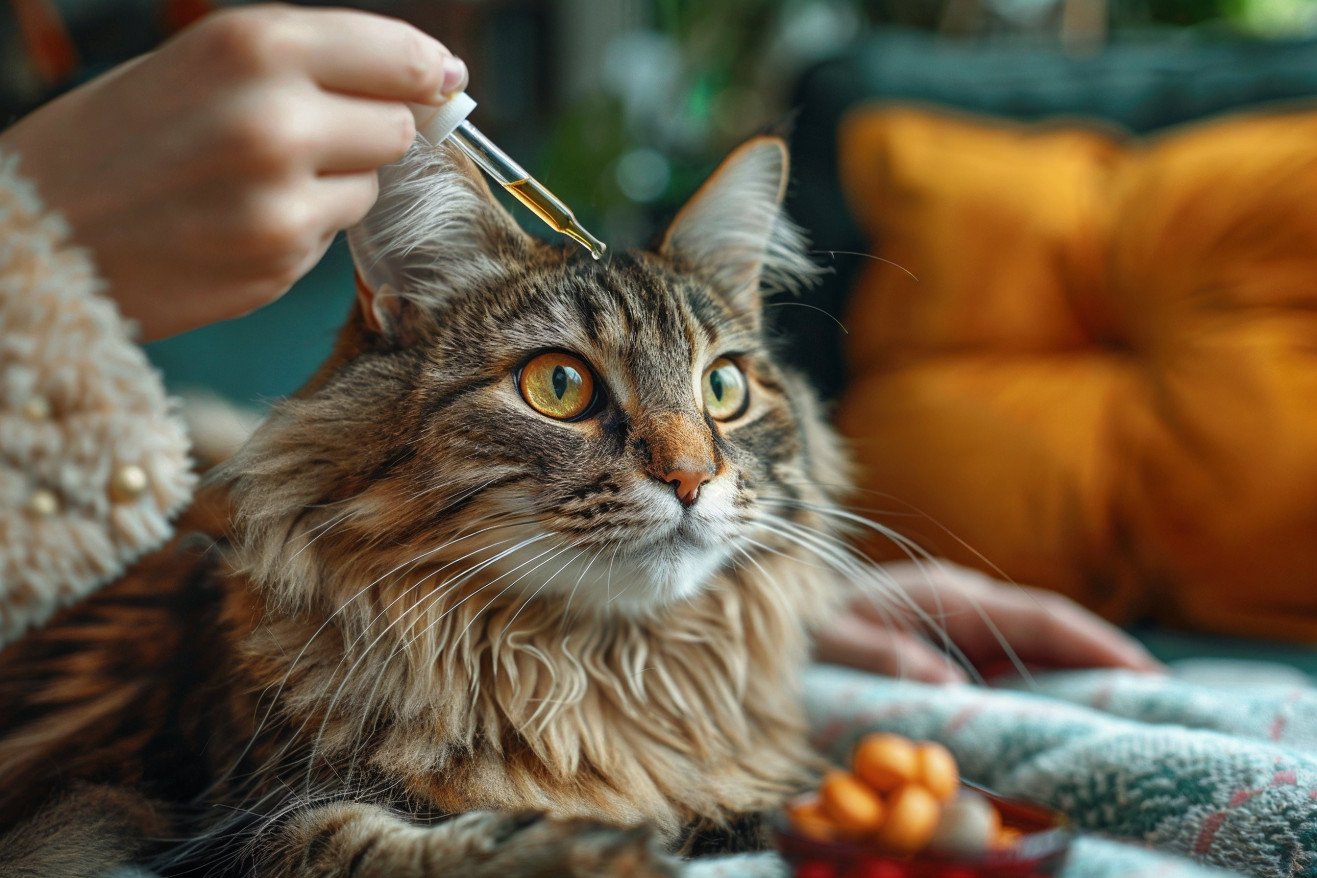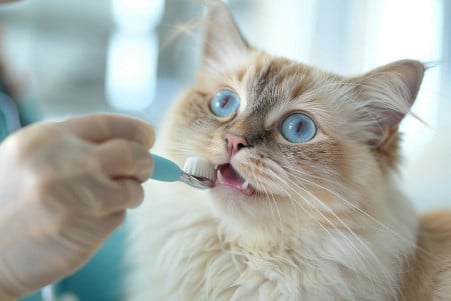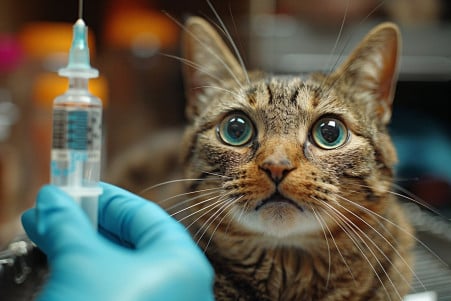How to Give a Cat Liquid Medicine: A Step-By-Step Guide
27 May 2024 • Updated 25 May 2024

If you have ever had to give a cat liquid medicine, you know that it can be a stressful experience for both you and your pet. However, with the right approach and a little bit of patience, you can successfully administer the medication. The most important thing is to make sure your cat feels safe and secure and to give the medication slowly, whether you're using a syringe or mixing the medicine with food.
In the sections below, we will cover expert-approved tips and techniques for giving a cat liquid medicine that will help you get the job done with minimal stress for you and your cat. From advice on how to prepare to the best ways to hold your cat, to tips for making the actual administration of the medicine as smooth as possible, this article is designed to help you and your cat get through a challenging situation as easily as possible.
How can I effectively give my cat liquid medicine?
Mixing Liquid Medication with Food: The Yummy Way
One of the best ways to hide liquid medication for cats is to mix it with strongly-scented, tasty wet food or treats. As Adams Pet Care points out, foods like tuna, salmon, or meat-based baby food can help cover up any bad tastes and smells that would make your cat refuse the medication.
However, it’s important to make sure that you only mix the liquid medication with a small amount of the strongly-scented food. According to Cat Town, if you give your cat a larger portion, there's a chance that they won't eat the whole thing and therefore won't get the full dose. Strongly flavored wet foods like AvoDerm's Wild By Nature Salmon Entrée can be especially appealing to even the pickiest eaters.
That said, it’s important to make sure that you talk to your vet first to make sure that the medication you're giving your cat can be mixed with food. As Crossroads Animal Hospital explains, there are some medications that won't work as well if they're not given in their original form. It’s also important to make sure that you give your cat the medicated food at their regular feeding times when they're most likely to eat it.
Oral Syringe Administration: Step-by-Step Guide
If you can't mix the liquid medication with food, you can give it to your cat directly using an oral syringe. According to the Wake Veterinary Medical Center, the first step is to gently restrain the cat by wrapping it in a towel or having someone assist in holding it still. This will help keep both the cat and the person giving the medication safe.
Then, slowly insert the dropper or syringe into the side of the cat's mouth, aiming for the cheek pouch. According to WikiHow, it's important to give the medication in small amounts, making sure the cat has time to swallow between each one. This will prevent the cat from inhaling the medication or choking.
Once you've given the full dose, make sure to reward the cat with a treat or some love. As recommended by The Cat Doctor, this positive reinforcement will make it easier to give your cat medication in the future.
How to Reduce Stress and Anxiety While Medicating Your Cat
Medicating your cat can be stressful for both you and your pet. According to the Just Cats Clinic, cats are sensitive to changes in their environment and routine, which can lead to stress and anxiety, so it's important to make sure your cat is in a calm, stress-free environment before you medicate them. VCA Animal Hospitals suggests that you can help reduce stress and anxiety during medication time by keeping the environment quiet and limiting distractions.
In addition, make sure to use gentle handling and approach your cat slowly to prevent them from getting scared. Hill's Pet recommends wrapping your cat in a towel or blanket, making sure to support all four legs, to help them feel more secure. It's also a good idea to ask your vet for tips on how to properly handle your cat.
You can also help reduce your cat's stress and anxiety by using calming pheromones or supplements such as Feliway, according to VCA Animal Hospitals. Finally, make sure to reward your cat with treats, petting, and other forms of positive reinforcement throughout the process to help make the experience as positive as possible.
What to Do If Liquid Medication Isn't Working
If you've tried every technique and your cat still won't take liquid medication, it's time to talk to your vet about other options. Your vet may be able to prescribe a transdermal gel or a long-acting injection instead. According to Forever Vets, these options can save you and your cat from the stress and anxiety of trying to give them liquid medicine.
Compounding pharmacies can also add flavors or coatings to make medications more appealing, says Lawndale Veterinary Hospital. In some cases, your vet may even recommend having the medication administered by a professional, according to Rover.
No matter what, don't force your cat to take their medication if they're getting too upset or aggressive. As Lawndale Veterinary Hospital explains, your cat's mental and emotional well-being should always come first, even if it means looking into other options or asking for professional help.
Conclusion: How to Make Medication Time a Positive Experience
Liquid medications can be difficult to administer to cats, but it's important for their health and well-being. It may take some trial and error to find the best method for your cat, but it's important to stay patient and positive. Positive reinforcement and a calm environment can help make the process easier.
If you're still having trouble, talk to your vet about other forms of medication or professional help. With the right approach, medication time can be a positive experience for you and your cat.


